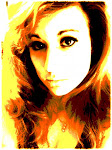
For my final Visual Concepts project I am going to do a black and white painting with a hint of red to portray the animals that can not speak for themselves that are being tortured and killed in China. With the Olympics coming up the Chinese are trying to "clean up" the cities and are herding thousands of animals, dogs and cats alike into unsanitary conditions and keeping them in the smallest cages before beating them to death or killing them some other cruel way. Not only is this going on but they are keeping bears, especially the Chinese Moon Bear, in really small cages to milk their bile from unsanitary open wounds in their abdomens for medicinal purposes. These animals have become skeletons of their former selves: rotting flesh, shattered teeth, and out of their minds. Left to suffer and die these animals deserve something more. I want to give them a voice with my painting, speak for them through the cages that keep them from their freedom.





